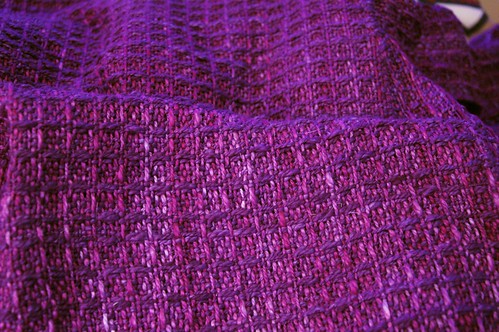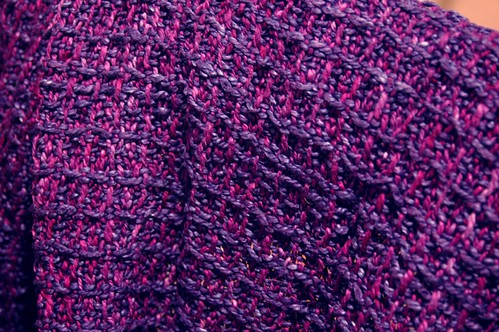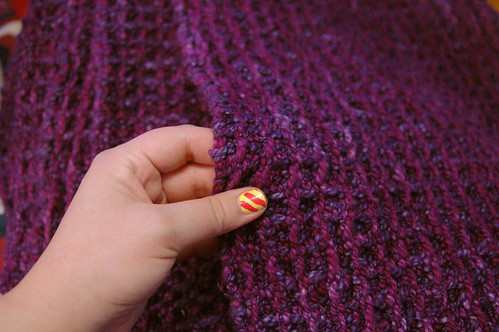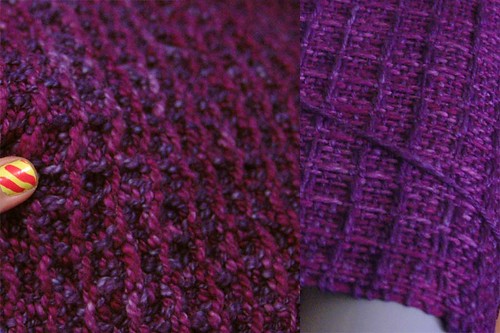 |
| Honey Comb Weave, on the Loom |
Blocking in weaving is basically the same process as in knitting and done for much the same reason. Blocking evens out tension, removes any dirt acquired during the creation process, and allows the fibers to intermesh. This last is a very poor description of what happens. In essence, your creation isn’t fabric until it’s been blocked.
 |
| Just off the Loom |
The main difference between blocking knitting and blocking weaving is the matter of tension. Blocking a knitted piece, especially lace, almost always involves stretching a wet fabric and pinning it in place until it dries. Blocking, in general, will grow a piece of knitting. Weaving however, is made under tension. Blocking, in general, will shrink a piece of weaving.
 |
| After a machine wash, still wet. |
Without the need for 80,000 pins and a giant cork board, and also given that weavings are by nature flat, blocking most woven pieces is pretty easy. Wash, lay flat to dry. Occasionally wash, and hang up to dry. Hanging things to dry rarely results in something you don't end up having to iron. Linen usually gets rougher treatment then cotton or wool, but linen is the fabric we love to abuse.
 |
| After a Tumble Dry |
Cotton, like this blanket, can go in the dryer. A rough tumble dry has enough agitation and heat to shrink cotton pretty dramatically. In a honeycomb, or any other texture weave, shrinking allows the texture to really blossom. This yarn is Inca Cotton from Henry's Attic, dyed by me, woven in a simple honeycomb weave.
 |
| After and Beflore Dimensions changed from 28 feet by 14.5 inches to 26 feet by 14 inches. |
Pro-Tip: don't put more then a pound of cotton in a dye pot at the same time. The troubles I had dealing with 4 pounds of wet cotton show in the difference between the warp and weft.
Pro-Tip the Second: Ultraviolet from Dharma's line of Fiber Reactive Dyes is a fantastic hue. However it also tends to stay in the pot, and trying to rinse it out will make you pray for a second Flood. Don't use it for anything you can't machine wash, and wash it twice alone before you try it in a mixed load.
No comments:
Post a Comment